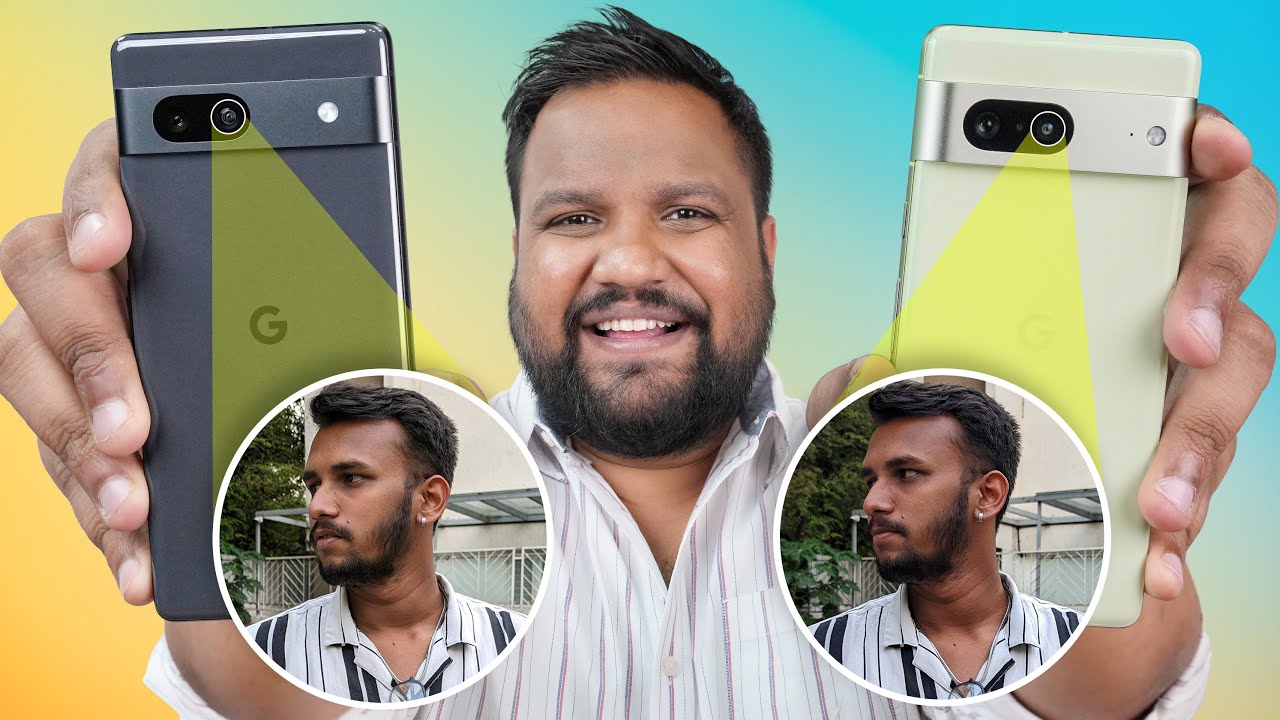Pixel 7a Vs Pixel 7 Camera Comparison Review - Unexpected Final Results!
Unleash Your Creative Genius with MuseMind: Your AI-Powered Content Creation Copilot. Try now! 🚀
When it comes to launching their hardware products in India, Google has always left consumers puzzled. The recent release of the Pixel 7A is a perfect example of their perplexing strategy. Just after the summer sales, where the Pixel 7 was available for as low as 45,000 rupees, the Pixel 7A was launched at a slightly lower price of 44,000 rupees. This inconsistency in pricing has left many consumers scratching their heads. Google seems to follow a pattern of initially launching their phones at a higher price, only to discount them later during sales events like Flipkart. The Pixel 6A faced a similar fate, with its price dropping immediately after its launch. Despite this, the Pixel 6A, now available for 25,000 rupees, offers great cameras and a good deal for potential buyers. But what about the Pixel 7A? Is it worth the upgrade? Let's dive into its camera performance and find out.
The Camera Showdown: Pixel 7A vs. Pixel 7
When it comes to the cameras on the Pixel 7A, Google has made some significant upgrades. The primary camera now boasts a 64-megapixel Sony IMX 787 sensor, paired with an F/1.89 aperture lens. In comparison, the Pixel 7 features a 50-megapixel Samsung GN1 sensor, which is slightly larger and has a larger pixel size. The ultra-wide camera on the Pixel 7A has a higher resolution of 13 megapixels and a wider field of view compared to the 12-megapixel ultra-wide on the Pixel 7. On the front, the Pixel 7A sports a 13-megapixel selfie camera, while the Pixel 7 has a 10.8-megapixel selfie camera. It's worth noting that neither of these cameras have autofocus.
In terms of sharpness, the Pixel 7 takes the lead in daylight shots. The larger sensor and pixel size result in sharper textures compared to the Pixel 7A. However, the Pixel 7A excels in color accuracy and white balance, consistently producing spot-on results. The Pixel 7, on the other hand, tends to have a slightly red cast, making the scenes appear warmer than they actually are. While this can be corrected in post-processing, if you value accuracy, the Pixel 7 is the better option.
When it comes to handling high dynamic range scenes, both phones perform exceptionally well, and the difference is hardly noticeable. However, the red cast issue on the Pixel 7 affects skin tones, resulting in slightly unnatural renditions. Portrait mode pictures on the Pixel 7A show improved depth mapping and more accurate edge cutouts compared to the Pixel 7, which often produces artificial-looking shots. Google's portrait mode algorithm still falls short compared to Samsung's or Apple's, but it's a step in the right direction.
Surprisingly, the Pixel 7A outshines the Pixel 7 in low light shots. The noise correction algorithm on the Pixel 7 tends to soften the details, while the Pixel 7A retains sharper details with slightly more noise. This trade-off works in favor of the Pixel 7A, as noise is not necessarily a bad thing, and the increased details make the low light shots more appealing.
The ultrawide sensor on the Pixel 7A offers equally sharp details as the Pixel 7, but with better color science and white balance. The red tint issue that plagues the Pixel 7 is a significant concern, and Google should address it with an update. The consistency in color between the primary camera and the ultrawide on both phones is commendable. In low light shots, the Pixel 7's ultrawide performs better, offering lower noise levels, sharper details, and brighter exposure compared to the Pixel 7A.
When it comes to video recording, both phones can shoot 4K videos. The Pixel 7A's primary camera matches the detail level of the Pixel 7, with similar dynamic range quality and sound recording. The main difference lies in color science and white balance, with the Pixel 7 videos appearing slightly warmer. In low light videos, the Pixel 7 takes the lead with lower noise levels and higher sharpness. The ultrawide angle video quality is also better on the Pixel 7, thanks to its ability to shoot at 4K 60fps, while the Pixel 7A tops out at 4K 30fps. Selfie videos can only be recorded at 4K 30fps on the Pixel 7A, with better sound recording on the Pixel 7.
The Verdict: Pixel 7A or Pixel 7?
In the end, choosing between the Pixel 7A and the Pixel 7 for photography is a tough decision. While the Pixel 7 edges ahead in terms of sharpness in daylight shots, the Pixel 7A offers improvements in HDR processing, portrait mode, low light performance, and skin tones. If you prioritize great selfie performance and higher resolution video recording from the secondary ultrawide and selfie cameras, the Pixel 7 is the phone for you.
Google has put consumers in a dilemma with the Pixel 7A. It comes tantalizingly close to the Pixel 7 in terms of features and performance, especially in the camera department. The decision ultimately depends on your preferences and priorities. If you want a more affordable option without compromising on camera quality, the Pixel 7A is a compelling choice. However, if you value selfie performance and higher resolution video recording, the Pixel 7 remains the top pick.
Conclusion
Google's hardware strategy in India may be puzzling, but the Pixel 7A proves to be a worthy upgrade over its predecessor, the Pixel 6A. With improved camera performance

Related Recaps
- TỬU HỌA - SONA, GNASK, NLR, NHATHUY | OFFICIAL MUSIC VIDEO
- Anupam Kher ने दोस्त Satish Kaushik की आत्मा की शांति के लिए की प्रार्थना #shorts #kalighatmandir
- Insane Orb Drop on Panda Magic - Watch My Jackpot Skyrocket! 🐼💰
- Advanced World War I Tactics with General Melchett
- European Tekken Cup - Day 1 - Pools